IN ASSOCIATION WITH:


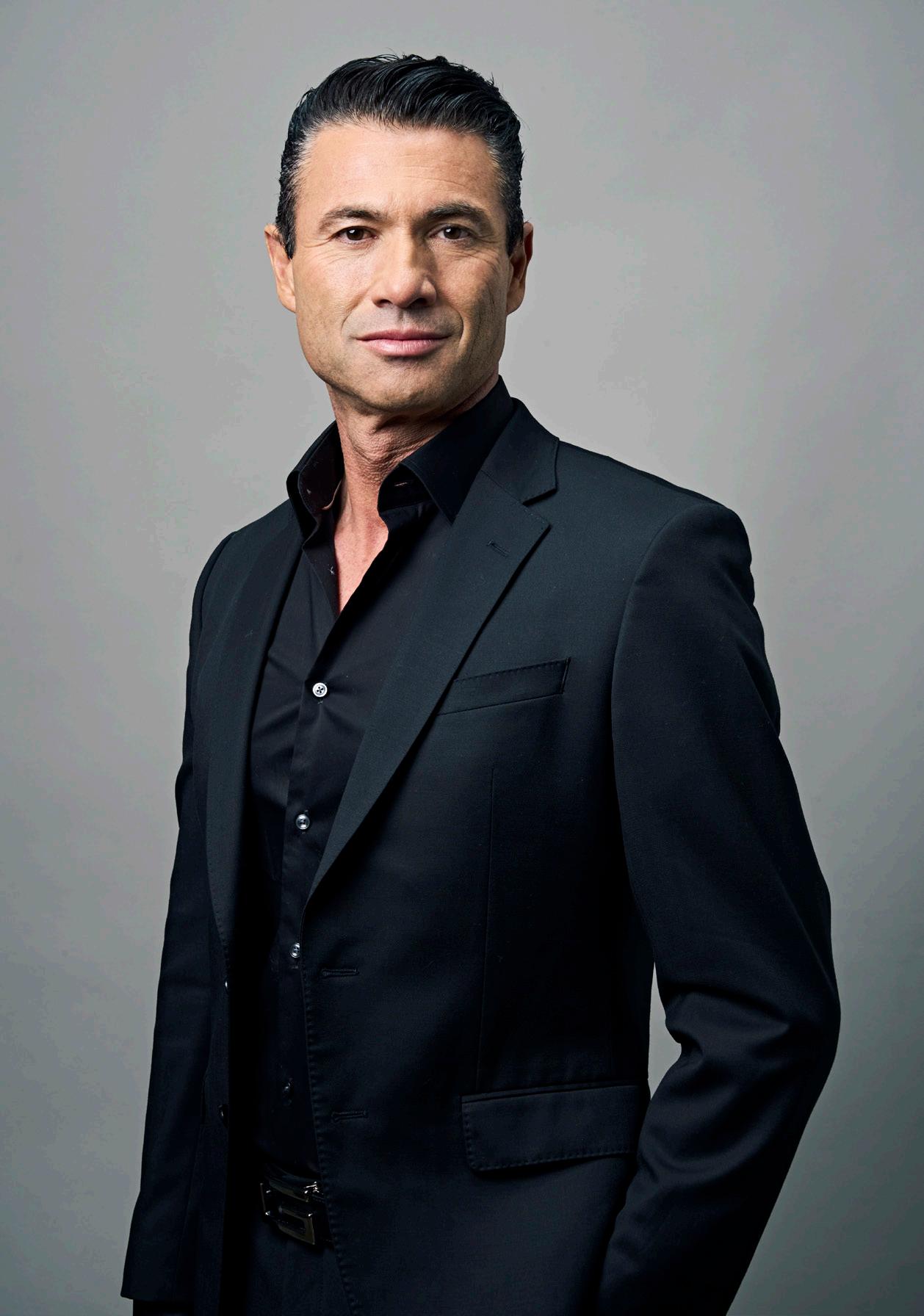
Why telecom’s hopes and dreams hinge on software
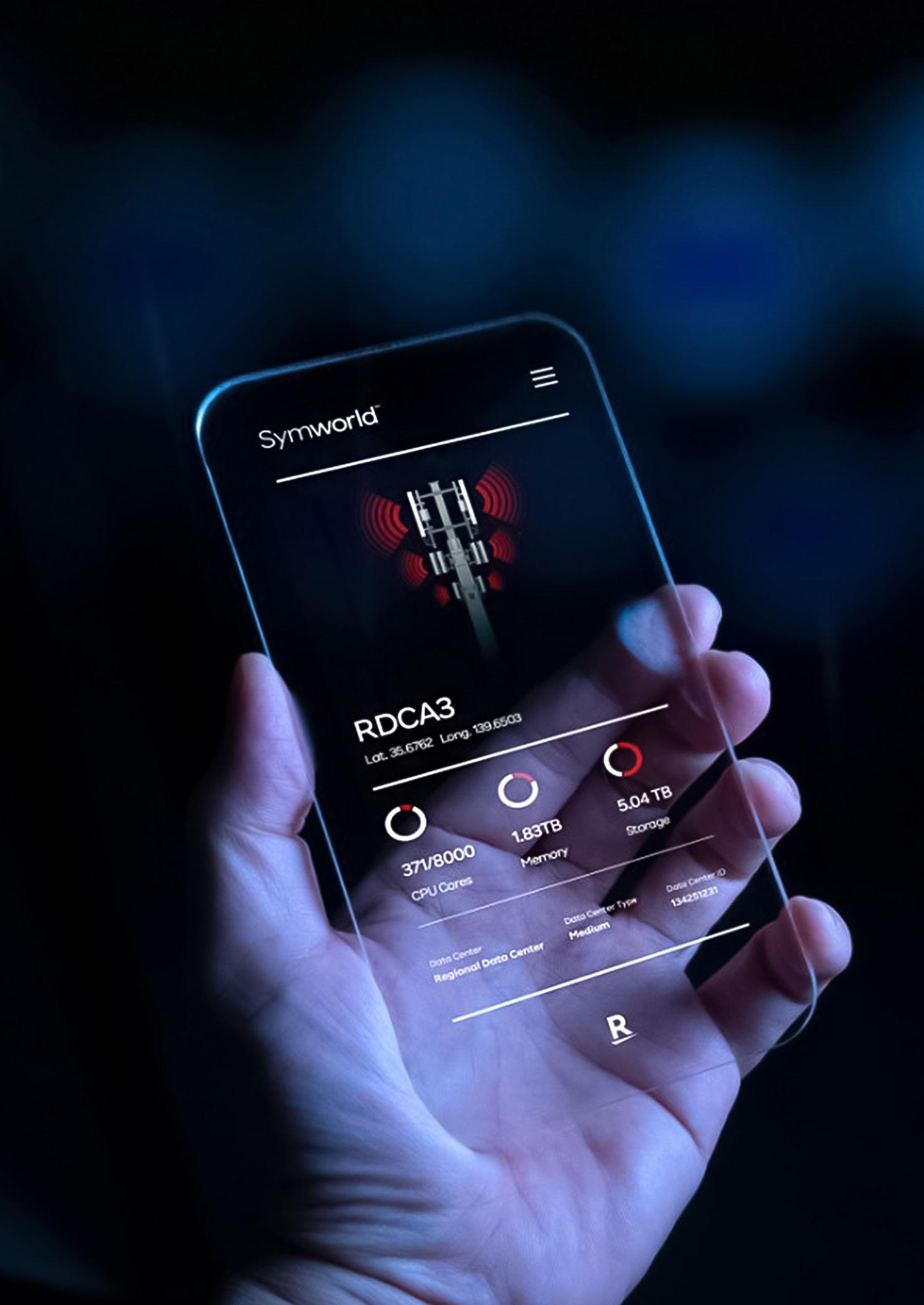


IN ASSOCIATION WITH:



Why telecom’s hopes and dreams hinge on software





Cast your mind back over the last forty years of evolution in telecoms – a considerable amount has changed in this time, right?
Though this may appear to be the case, what with the development of mobile phones themselves, the critical layers upon which such evolution has been predicated have actually remained pretty much, well, the same. After all, if it isn’t broken, why fix it?
But it’s this attitude that has the industry trapped in a vice-like grip, reliant on arduously clunky hardware-based systems that should, by now, have been relegated to the past.
With the very nature of mobile services ripe for a revolutionary reimagination, then, Rakuten Symphony was born. Functioning as the telecoms arm of the Rakuten Group – a strategic B2B, digital bank and ecommerce and digital contents group with more than 1.7 billion members worldwide – its entire premise is based on one radical decision: choosing not to build its mobile network on legacy hardware.
“The idea to move the entire mobile architecture into a software-centric platform isn’t a small evolution. It's a revolution of how networks are engineered, built, and architected based on new, modern cloud architecture, in which Open RAN is just one pillar of the many things that we have done,” says Tareq Amin, CEO of Rakuten Symphony.
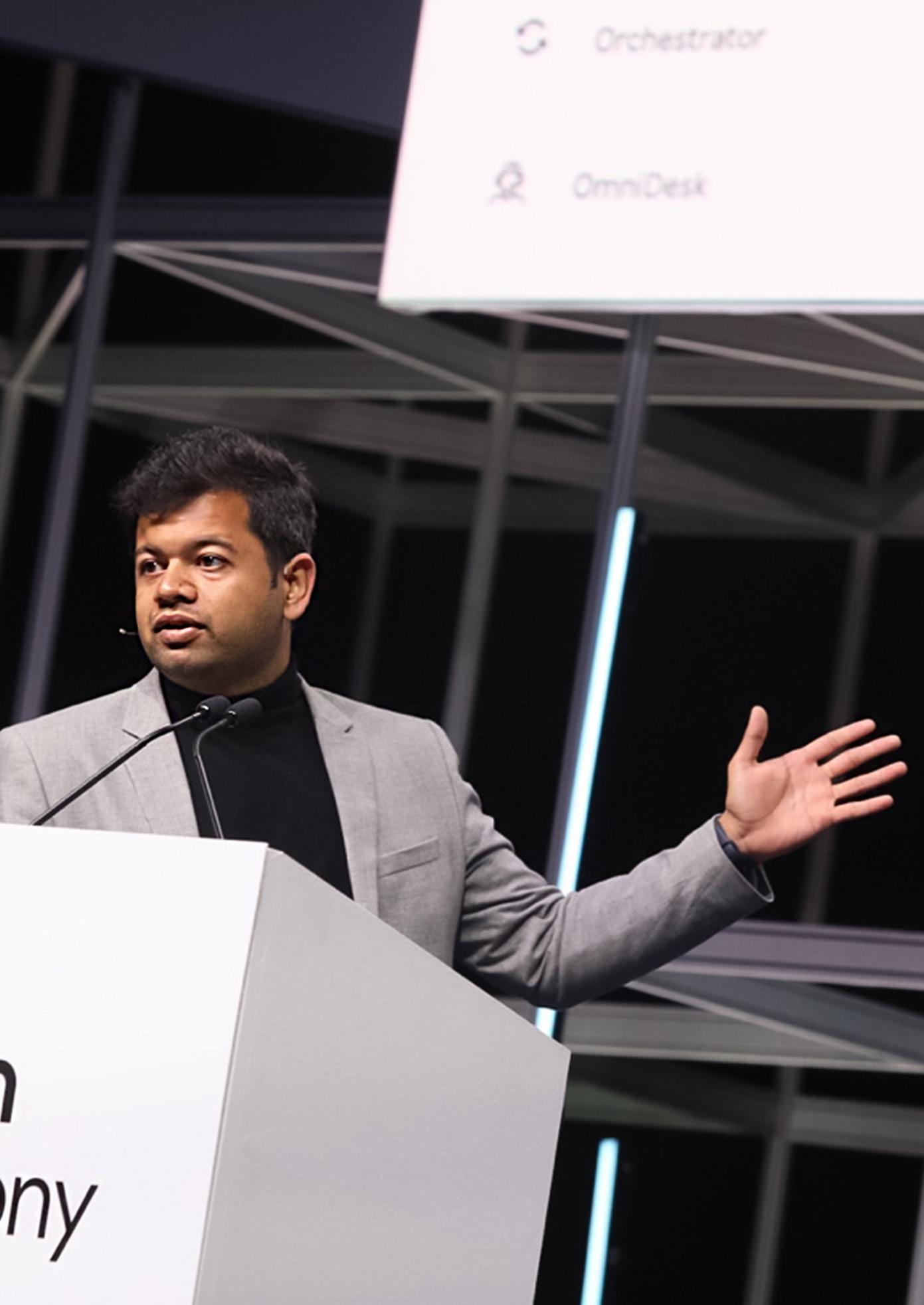
More than happy to prove the naysayers wrong and propel Rakuten Symphony into a leading position within telecoms, Amin set
about building a team, an ecosystem and the network he envisioned.
It’s a truth universally acknowledged (in the telco world, at least) that in its current state, “the industry is in decline”.
After failing to evolve alongside the global technological landscape for the past few decades, telecoms has proven slow to change, to drive forward, and to differentiate. This has led to declining revenues and returns amid increasing costs and competition, placing the industry in a precarious position.

“Four and a half years ago, the world thought I was crazy, that this would never happen and never succeed”
TAREQ AMIN CEO, RAKUTEN SYMPHONY
Meanwhile, across this same 40-year period, cellular networks and enterprise IT have undergone multiple stages of evolution to reach where they are today – so why is it that progress for the infrastructure itself has stymied? One suggestion is the sheer amount of capital invested in data centre real-estate; another is a collective lack of understanding regarding the cloud. Amin had his own ideas.
“For me personally, before Rakuten, my own mindset was completely opened and transformed by a visit I had to Facebook before it was called Meta,” he shares. “Seeing how other enterprise IT companies, hyperscalers, and webscalers run their
TITLE: CEO
COMPANY: RAKUTEN SYMPHONY
INDUSTRY: TELECOMMUNICATIONS

LOCATION: CALIFORNIA, US
Tareq Amin is a technologist, business leader and entrepreneur with nearly two decades of experience driving telecom innovation.
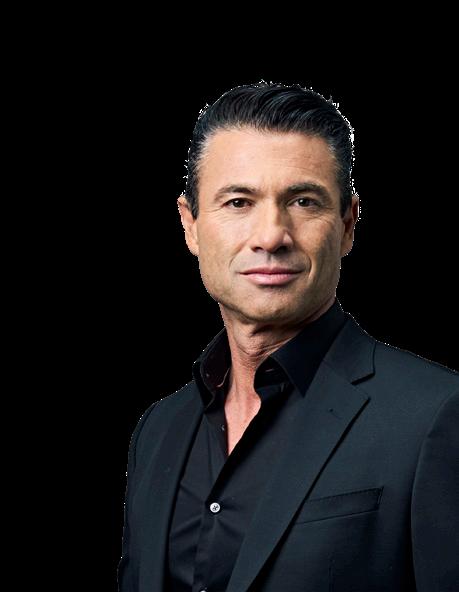
Amin launched Rakuten Symphony, a Rakuten Group company, in August 2021 with a vision to reimagine telecom for a hyperscale era, delivering the convergence of IT and telecom networks. As the CEO of Rakuten Symphony, Amin has taken the company from start-up to industry disruptor, introducing to the market his bold vision of mobile as a software. Believing that traditional tools used by industry incumbents are outdated and do not meet the demands of modern connectivity, and drawing on the proven technologies and operating principles of hyperscale leaders, Amin has overseen the creation of the industry’s first modern, industrial-scale automation platform built specifically for telecom.
A leading voice for the future of telecom and champion for the democratisation of the industry, Amin is dedicated to revolutionising the way we communicate and collaborate in the digital age.

At Bluewaves Mobility Innovation (BMI), we believe in giving customers the freedom to choose how they build their custom networks. That’s why our advanced Open RAN radio solutions are aligned with the latest Open RAN standards, ensuring compatibility with any DU/CU combination in the marketplace

Mobile Network Operators today are looking for flexible and secure solutions that allow them to quickly customize their radio solutions to meet their unique network requirements. Our advanced Open RAN products are designed to meet these needs
BMI solutions provide the flexibility customers need; built to O-RAN Alliance specifications. Our products are interoperable with any DU/CU combination in the marketplace and can easily be integrated into your chosen baseband set up.
This allows network operators to make cost effective purchasing decisions by selecting the best equipment from any supplier, rather than being tied down to a single vendor.
Additionally, BMI’s RF platforms allow customers to add the feature sets that their end consumers are
demanding, while benefiting from the flexibility and supply chain security that Open RAN offers.
With BMI’s base radio platforms in place, custom frequency radios can be designed in a matter of months, not years. Our implementation services can help customers easily integrate new products into their network.

Our lightweight radios have been designed with the latest GaN power amplifier technology ensuring that power consumption is kept to a minimum, helping to reduce the impact on the environment as well as your total cost of operation.
operations was honestly probably the biggest fundamental transformation in my thinking that has happened because, to date, I lived in a telco life where I was told what to do by existing large vendors. My mind wasn’t necessarily open yet to exploring the world outside of telecom, until I went to Facebook.
“And then I started looking at the operations of how they run. I started asking, ‘how do they achieve these efficiencies?’. And those questions led me to understand that this is not a technology problem.”
Recognising that it’s more to do with mindset than technology, a seminal moment in itself, Amin saw a whole new future for the development of telco.
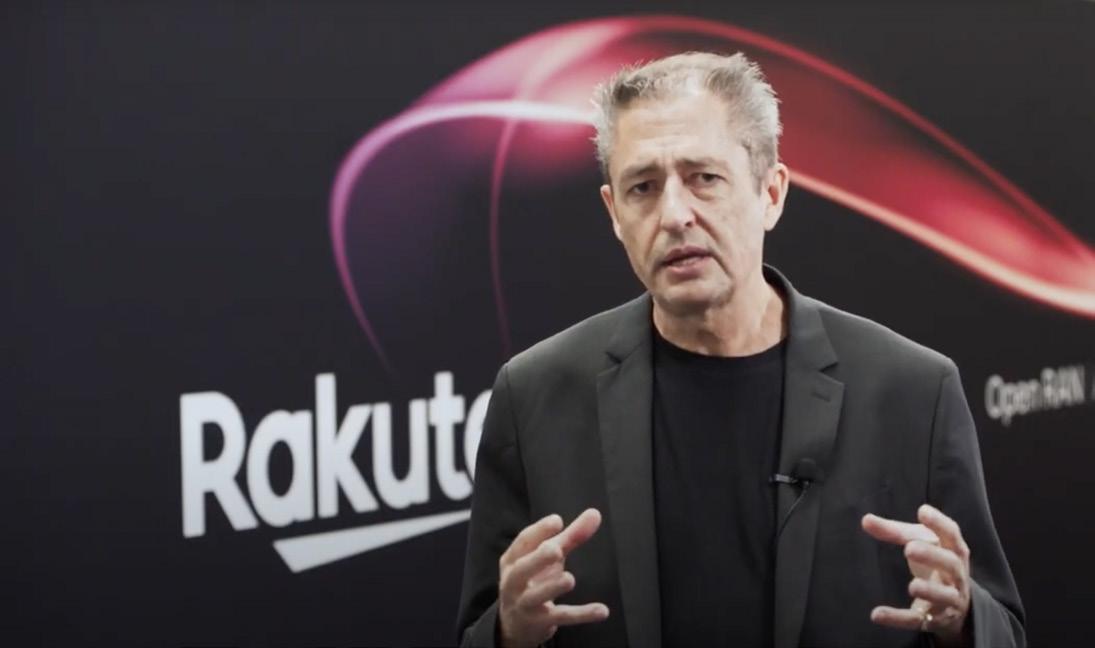
“Look at moments in time that changed the way we consume data on mobile; the moment Steve Jobs talked about the iPhone

“In the truly cloudnative, you take that monolithic system, you break it into modules and pieces, and then you deploy, manage, upgrade, and patch each one separately”
RABIH DABBOUSSI CHIEF BUSINESS OFFICER, RAKUTEN SYMPHONY
– we all know that was a game changer. And we all know the impact that this iPhone had in the creation of the new generation of networks, in terms of driving data consumption and acceleration of a datacentric mobile architecture.
“While consumer devices have evolved substantially since the invention of the 1G mobile network in the 80s, the fundamental foundation of these networks has never changed. They are still run on proprietary hardware, have a strong hardware dependency, require long lead times to build, and bring extremely high operational complexity. And thus, here comes Rakuten.”
Strategy matters: software vs hardware “Mobile networks and telecom networks in general, because of the complexity and
because of the fact that the technology is quite unique, have not gotten to a level of openness as we have in the enterprise world,” explains Rabih Dabboussi, Rakuten Symphony’s Chief Business Officer and a keen technologist with an abundance of experience.
“For example, your email application from Microsoft works with my email application from Apple, a radio site that is offered by vendor X with antenna, a base band unit, and associated ancillaries and components, but that cannot be disaggregated – where you select the antenna from vendor X and the basement unit from vendor Y, and other control planes and user plane functions from vendor Z.
“So the idea behind Mobile-asa-Software is to open up those very interesting and proprietary interfaces that


used to be monolithic, breaking them down and disaggregating them through standard interfaces.
“And that's why Open RAN is not something that Rakuten came up with; it’s something that the industry demanded, it stemmed out of a need. And although
Rakuten advanced it and contributed and participated, this is an industry drive and an industry initiative.”
With this new, disaggregated service platform, software-centricity is built into the framework, meaning a lesser reliance on antiquated hardware that’s expensive to operate and replete with inefficiencies. But what other benefits can a softwarebased operational approach provide over traditional hardware?
Dabboussi says: “It's starting to make it more open so that you fuel and accelerate innovation, bringing in diversity and flexibility to the industry. Eventually, the outcome is also going to be reduced cost, because with openness, you create competition, you create new, better, cheaper ways of doing things, and therefore it will all follow through.
“About 15 years ago, we started talking about using cloud for enterprise workloads,

“The ecosystem and the partnership environment that we have is super important to our success, and very complementary and mutually valuable in our strategies”
RABIH
CHIEF BUSINESS OFFICER, RAKUTEN SYMPHONY
and everybody was resistant initially, but then they realised, ‘Hey, wait a minute, it's secure, it's highly available and it's cheaper'.”
Back in telecom's heyday, every company used to invest in their own traditional data centre with custom-built hardware. Similarly, in the telco world, “the radio network is typically the most expensive asset” because you have to deploy thousands of sites, provide coverage, and place antennas near to customers. Just 20 years ago, the radio access network came from 10-15 vendors; now, only a handful of the original number exists. Thus, as the industry’s radio vendors continue to shrink in number, it is coming to resemble “more of an oligopoly with little transparency”.
By moving to software, Dabboussi states a belief that Rakuten Symphony can “leverage the industry’s innovation in compute and
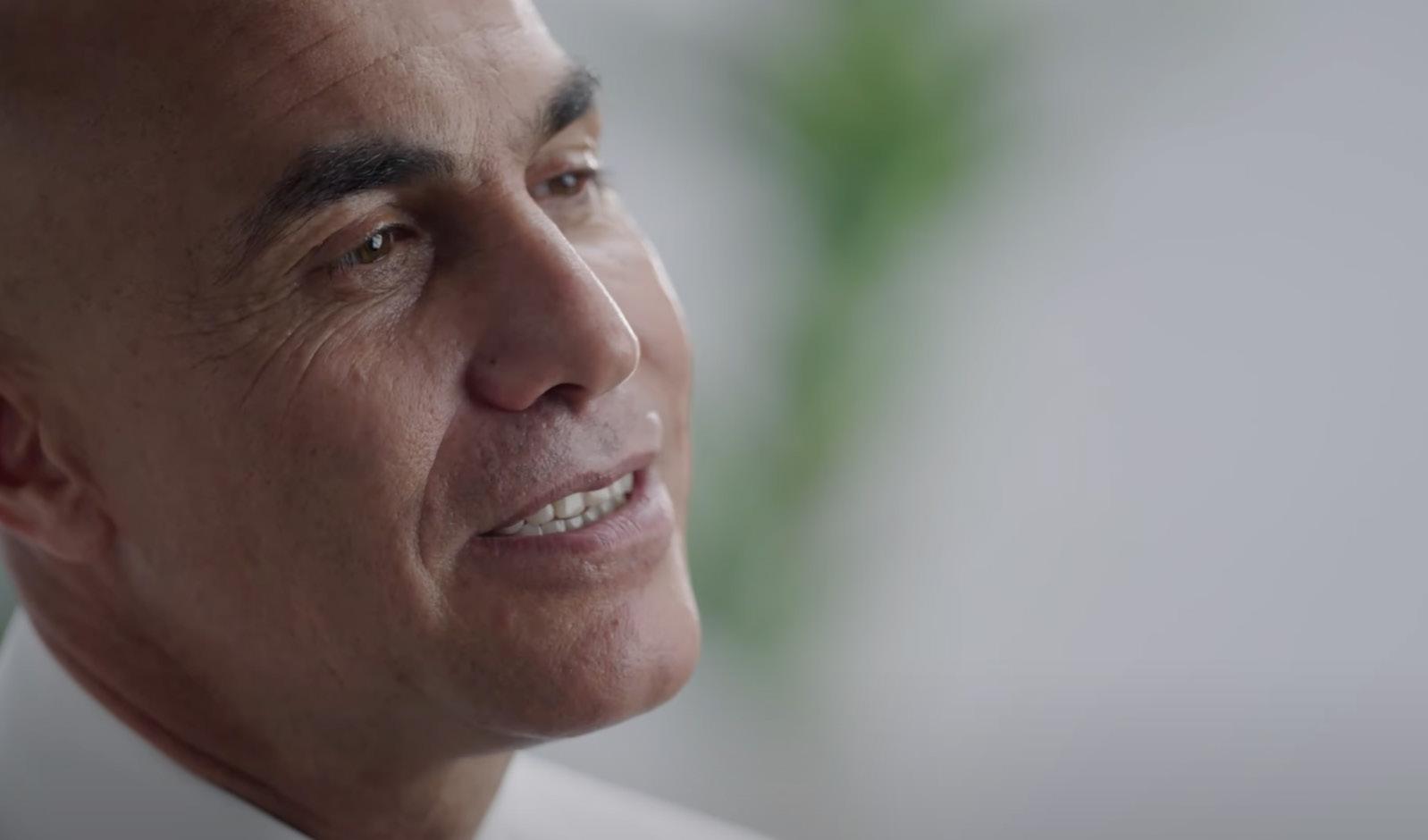

Symworld - The journey through automation to autonomy
general purpose processors”, including silicon chipsets and processors powerful enough for telco workloads.
“Our architectural foundation was around: ‘Let's build the network using the latest in industry innovations, and let's not take steps back because we're new in the industry, we want to build something for the future’.
“The first strategic decision was to use a software-only system for the radio access network. And along that, build a unified cloud layer that supports every function in the network with one operating system, with one virtualisation layer eliminating the complexities, but requiring our suppliers and our partners to convert their systems to software-only in the long-run,” explains Dabboussi.
“Not just a software system that runs in a big, monolithic, virtualised layer, but we want you to follow the mission to convert it to a Kubernetes-based, containerisedbased architecture, because it’s lightweight, efficient, very agile, and modular.”
He continues enthusiastically: “In the truly cloud-native, you take that monolithic

“It's starting to make it more open so that you fuel and accelerate innovation, bringing in diversity and flexibility to the industry”Symphony Employees
Rakuten Symphony entrusted open source Rocky Linux, supported by CIQ, to help spur a new era of telecom innovation.
In deploying Rocky Linux, we are returning to true open source principles.
Learn how Rocky Linux, supported by deep CIQ expertise, has radically reduced cost and delivered on business outcomes.
Visit https://use.ciq.co/rakuten
 Tareq Amin CEO of Rakuten Mobile and Rakuten Symphony
Rakuten Symphony, Rocky Linux, & CIQ
Tareq Amin CEO of Rakuten Mobile and Rakuten Symphony
Rakuten Symphony, Rocky Linux, & CIQ
system, you break it into modules and pieces, and then you deploy, manage, upgrade, and patch each one separately. And the granularity of your infrastructure becomes wider, but also gains the ability to be agile, fast, adjust, interconnect.”
Thus, the concept of Mobile as a Software was born, with Rakuten Symphony planning, designing, and operating “nextgeneration, software-defined networks”. This comes in the form of the Symworld Cloud – the “leading unified telco edge cloud” that links from cell sites to central data centres – and the Symworld Network, with Open RAN 4G, Open RAN 5G, and Symware appliances, leading to the next generation of OSS and BSS.
Dabboussi explains further: “Existing OSS systems are quite complex and quite burdensome, built on element management systems. These are the tools that manage the elements of the network – or the network management system. These are the tools that bring it together at a network level. We eliminated both of these, and we built a complete observability framework that is abstracted from the vendor's specific technologies.

TITLE: CHIEF BUSINESS OFFICER
COMPANY: RAKUTEN SYMPHONY
INDUSTRY: TELECOMMUNICATIONS
LOCATION: UAE
Rabih Dabboussi is Chief Business Officer of Rakuten Symphony, a new business organisation within the Rakuten Group to spearhead the global adoption of cloud-native open RAN infrastructure and services. In this role, Dabboussi is responsible for bringing Rakuten Symphony’s telco solutions, including the Rakuten Communications Platform, to operators, governments and enterprises around the world.
Dabboussi is a seasoned and highly recognised industry expert who brings more than two decades of experience in the mobile industry to Rakuten, including a 20-year progressive career at Cisco Systems in diverse roles of R&D, technology consulting, business development, and sales leadership.
EXECUTIVE BIO
“It's time for a change. And we'd like to have our name and our brand stand in that new chapter of telecom history”
RABIH DABBOUSSI CHIEF BUSINESS OFFICER, RAKUTEN SYMPHONY
With this software-centric approach, Rabih Dabboussi emphasises that though “hardware isn’t eliminated, it is standardised on common commodity hardware”, describing it as functioning in a way similar to Lego, with moveable, interlocking layers being stacked on top of each other.
Platform Infrastructure layer – open commodity compute systems that Rakuten call “the servers” and Open RAN radio units.
“The foundation of your network is this commodity-based hardware, which immediately solves the problem of being locked into monolithic proprietary systems, because now you're using off-the-shelf compute systems that can come from numerous different vendors around the world.”

Cloud layer – “On top of the foundation, you need the layer that aggregates all of this hardware and makes it look as a pool of compute resources, storage resources and networking resources available for you. That layer is called the cloud layer or the virtualisation layer, which is where you start getting into the software.
“We made a conscious decision from the beginning to unify the cloud, and then, on
top of it, unify the operating system. So we use one single operating system, which is a containerised Kubernetes operating system.”
Open RAN and core network functions layer – “On top of that comes your logic, your network functions, which is all cloud-native software, including Open RAN Distributed Unit (DU) and Centralised Unit, and all core network functions.
“Now you need to manage the network. And again, because everything becomes software, it's much easier for us to build in a unified, abstract way in an observability framework to do config management, performance management, fault monitoring –all the dashboarding, the monitoring and the control of your network.”
Operations layer – “Here, adjacent to this, you need to plan, build, and operate the network while managing customers. The cloud-native Symworld Platform streamlines the complex mesh of support systems and custom integrations that all operators have accumulated. This helps telecom operators scale faster as the cloud sets the pace for speed, innovation, and network expectations.”
“That abstraction layer is through open interfaces and APIs, which allows us now to say, ‘whether you bring a technology from this vendor or that vendor, this supplier or that supplier, as long as they're compliant with those standard ways of managing, monitoring, and configuring those pieces of software in the network, then you don't need anything in between to translate’. And that ultimately resulted in significant agility in our network. This way, we can roll out hundreds of sites a day.”
The speed of this solution cannot be overstated: once the cell site has been constructed, it can take just “four minutes to bring a radio site on air” – from the time the labour team installs the radios through to connecting power and networks – because “everything is done automatically”.
“That helped us improve the productivity of our operations engineers, with over 300,000 cells managed by a team of only 250 people who are powered 20 times by the Symworld platform. A network of that size in North America has probably a few thousand engineers managing it.”
Functioning in individual, virtualised layers allows for a standardised foundation that can be built upon with “off-the-shelfsystems” around the world – adhering, to the nth degree, to Rakuten’s guiding principle of openness and Dabboussi’s “the future is nothing but Open RAN” mindset.
“The other benefit of this is the ability to automate and orchestrate, to make things faster and roll things out better; to troubleshoot in much quicker ways, identify the issues and fix them much quicker and so on. So that was really the drive behind building the network based on software.
“The aspiration is to have Rakuten Symphony become the de-facto platform for managing the whole lifecycle of a mobile network, from the idea of building a network all the way to the decommissioning, upgrade and refresh of the network, as well as everything in between that takes place,” explains Dabboussi.

TAREQ AMIN CEO, RAKUTEN SYMPHONY
“The idea to move the entire mobile architecture into a software-centric platform isn’t a small evolution. It's a revolution”
For this to occur, a disruptive ecosystem of partners is needed, all working together to future-proof the industry by driving down operational costs and unlocking static vendor relationships.
“Rakuten couldn't have done this without the ecosystem of partners that participated in our buildout of the network in Japan and that continue to participate with us, globally,” Dabboussi establishes. “These are both big names and small names, and there's many of them; we're very open and our ecosystem is quite large. A few examples of these partners, which are demonstrating with us at Mobile World Congress Barcelona, include BMI, BayTec, and CIQ.
“BMI is a small radio supplier of ours, and they’re only building Open-RAN-compliant radios. I have a lot of aspirations for them. If they continue to execute well, they can bring a real change in the industry.
“BayTec, meanwhile, manufactures and supplies numerous different components for us, from ancillaries and batteries to devices and small radio units.
”Our philosophy about open, software-centric mobile networks is pivotal for a successful transformation of the mobile industry.
“For telecom, Rakuten Mobile and Rakuten Symphony are working closely with CIQ to ensure that Rocky Linux is proven at scale in commercial operations. There is a large and growing proactive community of very large technology companies that are ensuring Rocky Linux is leading, in terms of certified software drivers and capability compatibility for telecom. Rocky Linux and the community are ensuring that it is the best alternative for the highly demanding telecom industry, which is seen as a proxy for all industries that require edge-to-core-tocloud solutions.”
The aim of the game here is disruption, which – in terms of partnerships –potentially means moving away from some of the legacy cloud licensing methods in the telco worlds in favour of smaller, more agile and innovative players that are changing the game.
“We feel that these three partners are foundational to what we do, but our partnerships aren’t exclusive to our existing partners. We’re so open and transparent, always looking for new innovators to come and join us in this mission, because we cannot achieve it alone. And the industry is heading that way – the more players and
“Seeing how other enterprise IT companies, hyperscalers, and webscalers run their operations was honestly probably the biggest fundamental transformation in my thinking that has happened”
TAREQ AMIN CEO, RAKUTEN SYMPHONY
the more innovators, the more value and the more efficient the solution will be,” Dabboussi says.
“The ecosystem and the partnership environment that we have is super important to our success and quite complementary to our strategies.”
With Dabboussi envisioning a future that’s “nothing but Open RAN” and enthusing about the growing number of companies embracing a software-centric approach to mobile networks, he is particularly focused upon the four key ways he can turn that envisioned future into reality.
“It's very important for us to continue to stay the course in our mission, continue to improve and innovate in what we do –
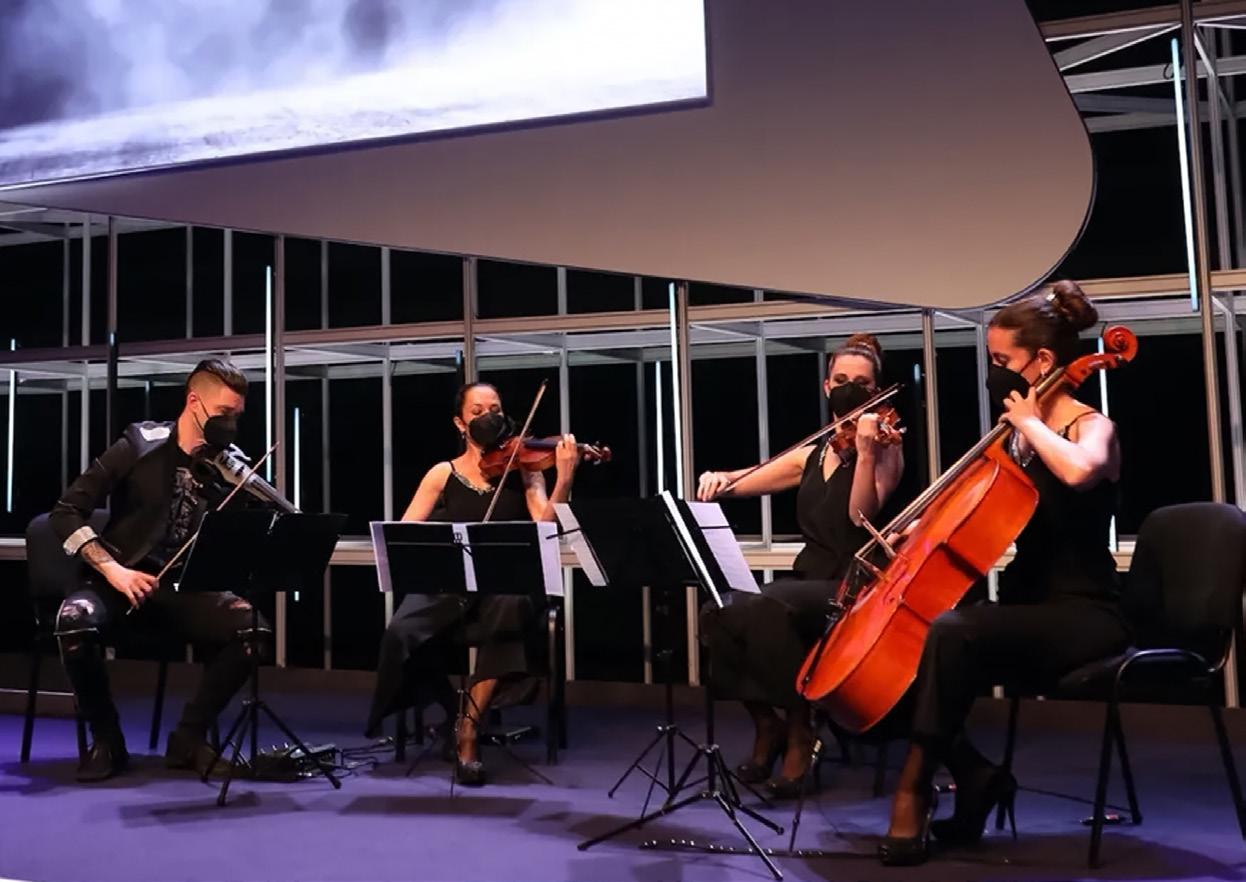
both on the technology pieces as well as the operating and commercial model.”
That means encouraging vendors and customers to sign up on “a complete cost transparency basis”. This isn’t to be limited to the technology pieces, it is to also include “the operating and commercial model, and the engagement and go-to market model” as well, due to the increasing volume of customers seeking out face-to-face interactions and resources located in the same time zone.
“So, ramping up our capabilities globally is super important, and we need to be a little more crisp in describing ourselves to the industry in general, but most importantly, to the stakeholders of our customers and decision-makers – which is exactly what this disruption is about and
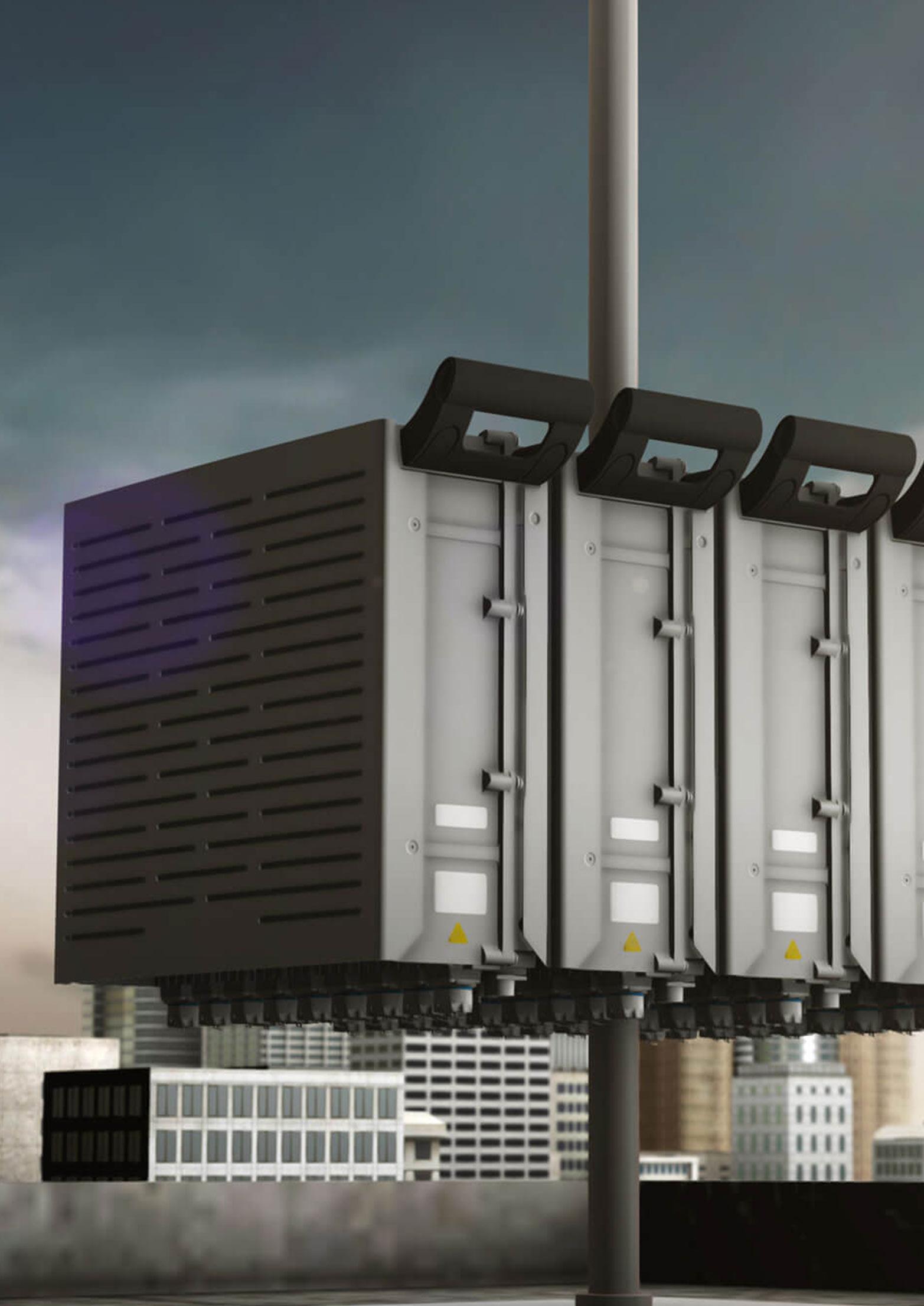
what the value behind that disruption is,” states Dabboussi.
“Last but not least is the call to the industry to come and join us in this journey. The more partnerships we establish and the more adoption of Software as a Service and Mobile as a Software architecture, the stronger this ecosystem becomes and the more value the whole industry will harness from it.
“I'm very bullish, very positive and very hopeful about what the future looks like for us.”
In the more immediate future, Dabboussi notes that there’s a focus on raising awareness and knowledge of Mobile as a Software through widespread education, feeding into this notion of a constantly evolving, disruptive ecosystem that’s synonymous with innovation.
“I'd like to see, hopefully very soon, some announcements around large, tier one national operators adopting our solutions. We're very close to making really good headways with a few of them – they're currently trialling and testing our systems, and we feel very positive about what's coming.

“We will continue to see improvement in the performance of the networks we're building. Rakuten’s network is considered in the top sixth percentile globally on performance and customer experience. On the engineering side, I see us introducing very interesting, innovative products and reference designs.”
Dabboussi concludes: “The next two years are our window of opportunity to lead the disruption in the industry and open a new chapter in the history of the telecom world. It's time for a change. And we'd like to have our name and our brand stand in that new chapter of telecom history.”
Rakuten Symphony 1 14 1 Tamagawa
Setagaya-ku Tokyo
158-0094
T 81 50 5581 6910 www.symphony.rakuten.com
POWERED BY: